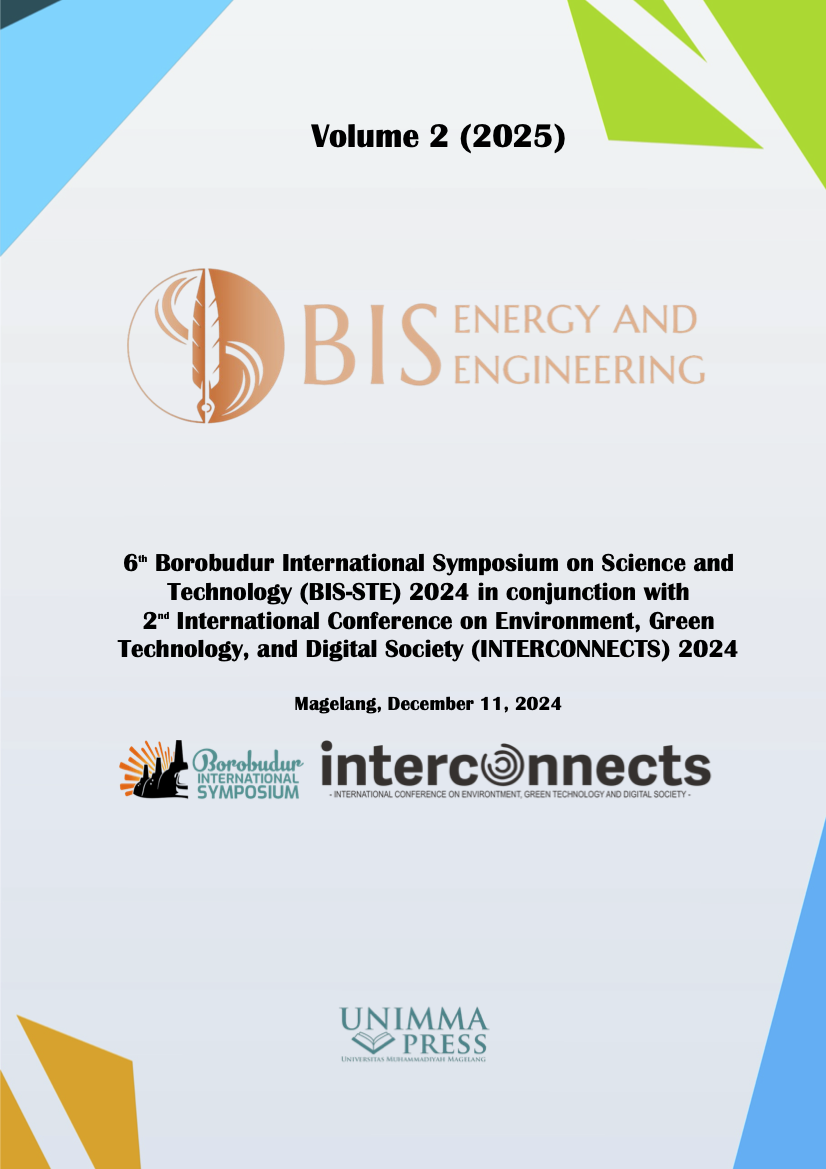Heavy metal contamination in swiftlet feathers: A comparative study of chromium and arsenic levels in industrial and non-industrial areas of East Java, Indonesia
Keywords:
Biomonitoring, Swiftlet, Chromium, Arsenic, X-Ray fluorescenceAbstract
This study examines the levels of chromium (Cr) and arsenic (As) in the feathers of edible-nest swiftlets (Aerodramus fuciphagus) from two distinct environments: an industrial area in Gresik, and a non-industrial area in Nganjuk, Indone-sia. Feather samples were collected from swiftlet houses in both locations and an-alyzed using an X-Ray Fluorescence (XRF) Analyzer. The results revealed that the average Cr concentration in feathers from Gresik was 3.36 ppm, compared to 1.49 ppm in Nganjuk. Similarly, the average As concentration in Gresik was 2.34 ppm, whereas in Nganjuk obtained it was 1.22 ppm. These differences may be attributed to factors such as air quality in flight areas, the drinking water consumed by the birds, and the quality of their food sources. The findings indicate that swiftlets inhabiting industrial regions are exposed to higher levels of heavy metals, highlighting the influence of environmental conditions on bioaccumulation. This study underscores the potential of swiftlet feathers as bioindicators of environmental pollution.
References
[1] T. Yao, G. Zhu, Y. Zhang, P. Yan, C. Li, and W. F. de Boer, “Bird’s feather as an effective bioindicator for detection of trace elements in polymetallic contaminated areas in Anhui Province, China,” Science of The Total Environment, vol. 771, p. 144816, Jun. 2021, doi: 10.1016/j.scitotenv.2020.144816.
[2] M. Dhimal et al., “Impact of Air Pollution on Global Burden of Disease in 2019,” Processes, vol. 9, no. 10, p. 1719, Sep. 2021, doi: 10.3390/pr9101719.
[3] S. R. Bhowmick, “Biodiversity assessment of bird species as bioindicators and the impact of air pollution on the ecological communit’, International Journal of Pure and Applied Zoology, Vol. 9, Issue 2, pp:18-25, 2021, doi: 10.3380/pr9..
[4] A. Bellino, A. Alfani, L. De Riso, R. Gregorio, T. Pellegrino, and D. Baldantoni, “A promising cosmopolitan biomonitor of potentially toxic elements in freshwater ecosystems: concentration gradients in sensitive areas,” Ecological Indicators, vol. 109, p. 105801, Feb. 2020, doi: 10.1016/j.ecolind.2019.105801.
[5] E. Boncompagni et al., “Egrets as Monitors of Trace-Metal Contamination in Wetlands of Pakistan,” Archives of Environmental Contamination and Toxicology, vol. 45, no. 3, Oct. 2003, doi: 10.1007/s00244-003-0198-y.
[6] H. Nergi̇z, “Assessment of Heavy Metal Concentration in Feathers of Armenian Gull (larus Armenicus Buturlin, 1934) and Water Samples of Hazar Lake, Turkey,” Applied Ecology and Environmental Research, vol. 17, no. 4, 2019, doi: 10.15666/aeer/1704_1022110227.
[7] F. Wang, S. Xu, Y. Zhou, P. Wang, and X. Zhang, “Trace element exposure of whooper swans (Cygnus cygnus) wintering in a marine lagoon (Swan Lake), northern China,” Marine Pollution Bulletin, vol. 119, no. 2, pp. 60–67, Jun. 2017, doi: 10.1016/j.marpolbul.2017.03.063.
[8] Å. M. M. Berglund, “Evaluating blood and excrement as bioindicators for metal accumulation in birds,” Environmental Pollution, vol. 233, pp. 1198–1206, Feb. 2018, doi: 10.1016/j.envpol.2017.10.031.
[9] S. Squadrone et al., “Humboldt penguins’ feathers as bioindicators of metal exposure,” Science of The Total Environment, vol. 650, pp. 1734–1739, Feb. 2019, doi: 10.1016/j.scitotenv.2018.09.326.
[10] A. A. Wibowo and F. U. Ningrum, “Modeling suitable habitats of Edible-nest Swiftlet (Aerodramus fuciphagus) to support ecotourism in karst ecosystem of Karang Bolong, Kebumen, Indonesia,” International Journal of Tropical Drylands, vol. 7, no. 2, Dec. 2023, doi: 10.13057/tropdrylands/t070206.
[11] A. Aowphol, H. K. Voris, K. A. Feldheim, P. Harnyuttanakorn, and K. Thirakhupt, “Genetic Homogeneity Among Colonies of the White-Nest Swiftlet (Aerodramus fuciphagus) in Thailand,” Zoological Science, vol. 25, no. 4, pp. 372–380, Apr. 2008, doi: 10.2108/zsj.25.372.
[12] E. K. S. Shim, “The chemistry of mucin glycoprotein in swiftlet (Aerodramus fuciphagus) edible bird’s nest,” Nanyang Technological University. Accessed: Dec. 28, 2024. [Online]. Available: https://doi.org/10.32657/10220/47738.
[13] R. Piper, Extraordinary Animals: An Encyclopedia of Curious and Unusual Animals. Bloomsbury Publishing USA, 2007.
[14] K. S. Patel et al., “A review on arsenic in the environment: contamination, mobility, sources, and exposure,” RSC Advances, vol. 13, no. 13, pp. 8803–8821, 2023, doi: 10.1039/d3ra00789h.
[15] V. L. Mitchell, “8. Health Risks Associated with Chronic Exposures to Arsenic in the Environment,” in Environmental Mineralogy and Bio-Geochemistry of Arsenic, DE GRUYTER, 2014, pp. 435–450. Accessed: Dec. 28, 2024. [Online]. Available: https://doi.org/10.1515/9781614517979.435.
[16] C. M. Aelion, H. T. Davis, A. B. Lawson, B. Cai, and S. McDermott, “Temporal and spatial variation in residential soil metal concentrations: Implications for exposure assessments,” Environmental Pollution, vol. 185, pp. 365–368, Feb. 2014, doi: 10.1016/j.envpol.2013.10.018.
[17] Y. Cui, C. Fan, X. Zhou, and P. Yu, “Impact of urbanization on heavy metals in outdoor air and risk assessment: A case study in severe cold regions,” Sustainable Cities and Society, vol. 114, p. 105713, Nov. 2024, doi: 10.1016/j.scs.2024.105713.
[18] A. Haghighizadeh et al., “Comprehensive analysis of heavy metal soil contamination in mining Environments: Impacts, monitoring Techniques, and remediation strategies,” Arabian Journal of Chemistry, vol. 17, no. 6, p. 105777, Jun. 2024, doi: 10.1016/j.arabjc.2024.105777.
Downloads
Published
Conference Proceedings Volume
Section
License

This work is licensed under a Creative Commons Attribution-NonCommercial 4.0 International License.

